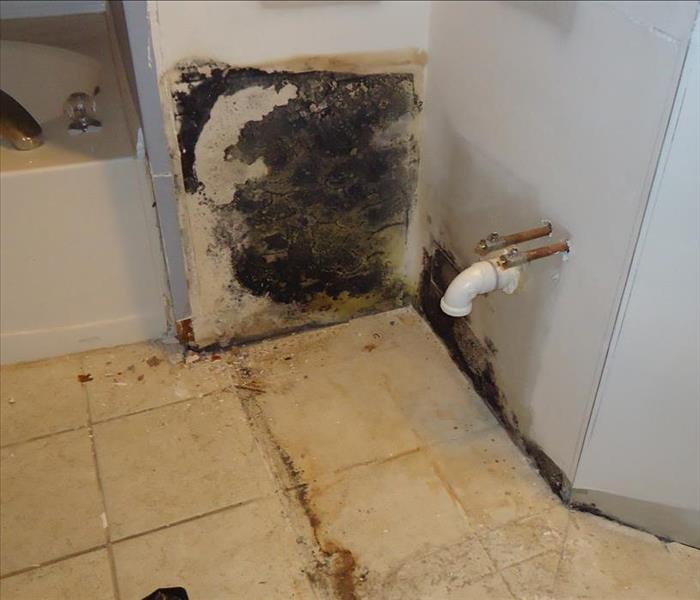You can control mold
4/25/2018 (Permalink)
Here are some great tips from the CDC [https://www.cdc.gov/mold/dampness_facts.htm]
Inside your home you can control mold growth by:
- Controlling humidity levels;
- Promptly fixing leaky roofs, windows, and pipes;
- Thoroughly cleaning and drying after flooding;
- Ventilating shower, laundry, and cooking areas.
If mold is growing in your home, you need to clean up the mold and fix the moisture problem.
Mold growth can be removed from hard surfaces with commercial products, soap and water, or a bleach solution of no more than 1 cup of household laundry bleach in 1 gallon of water.
Mold growth, which often looks like spots, can be many different colors, and can smell musty. If you can see or smell mold, a health risk may be present. You do not need to know the type of mold growing in your home, and CDC does not recommend or perform routine sampling for molds. No matter what type of mold is present, you should remove it. Since the effect of mold on people can vary greatly, either because of the amount or type of mold, you can not rely on sampling and culturing to know your health risk. Also, good sampling for mold can be expensive, and standards for judging what is and what is not an acceptable quantity of mold have not been set. The best practice is to remove the mold and work to prevent future growth.
If you choose to use bleach to clean up mold:
- Never mix bleach with ammonia or other household cleaners. Mixing bleach with ammonia or other cleaning products will produce dangerous, toxic fumes.
- Open windows and doors to provide fresh air.
- Wear non-porous gloves and protective eye wear.
- If the area to be cleaned is more than 10 square feet, consult the U.S. Environmental Protection Agency (EPA) guide titled Mold Remediation in Schools and Commercial Buildings. Although focused on schools and commercial buildings, this document also applies to other building types. You can get it by going to the EPA web site at https://www.epa.gov/mold/mold-remediation-schools-and-commercial-buildings-guide.
- Always follow the manufacturer’s instructions when using bleach or any other cleaning product.
MOLD PREVENTION TIPS
- Keep humidity levels as low as you can—no higher than 50%–all day long. An air conditioner or dehumidifier will help you keep the level low. Bear in mind that humidity levels change over the course of a day with changes in the moisture in the air and the air temperature, so you will need to check the humidity levels more than once a day.
- Be sure your home has enough ventilation. Use exhaust fans which vent outside your home in the kitchen and bathroom. Make sure your clothes dryer vents outside your home.
- Fix any leaks in your home’s roof, walls, or plumbing so mold does not have moisture to grow.
- Clean up and dry out your home thoroughly and quickly (within 24–48 hours) after flooding.
- Add mold inhibitors to paints before painting.
- Clean bathrooms with mold-killing products.
Remove or replace carpets and upholstery that have been soaked and cannot be dried promptly. Consider not using carpet in rooms or areas like bathrooms or basements that may have a lot of moisture.
To learn more about preventing mold in your home, see the Environmental Protection Agency’s publication A Brief Guide to Mold, Moisture, and Your Home[PDF – 1.38 MB].
In addition to causing significant property damage, mold can produce allergens and irritants that can cause health effects. SERVPRO Franchise Professionals understand mold and mold growth and have the training and equipment to remediate the mold in your home or business.






 24/7 Emergency Service
24/7 Emergency Service
